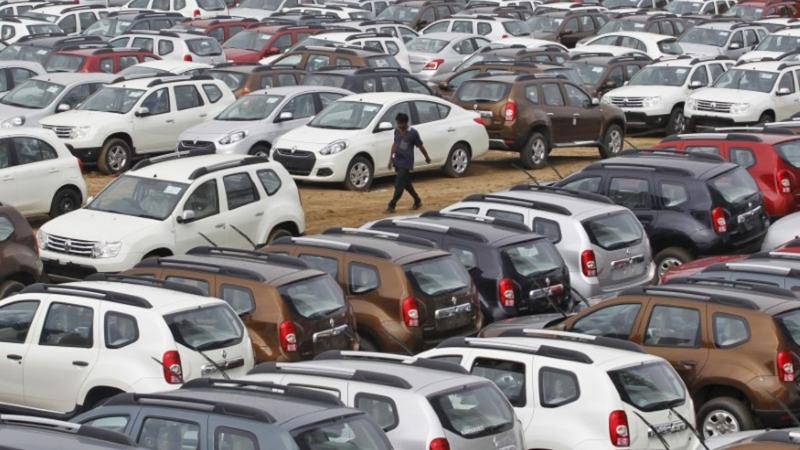Krishna with Flute
Senior Member
- Joined
- Jan 26, 2024
- Messages
- 4,928
- Likes
- 2,612
- Axis Group

India's Automobile Exports Rise 14% in April-Sept FY 2024-25, Led by 2 Wheelers
Overall exports stood at 45,00,492 units in the last fiscal year as compared with 47,61,299 units in FY23.
- India News
- 2 min read
Follow:

India's Automobile Exports Rise 14% in April-Sept FY 2024-25, Led by 2 Wheelers | Image: Reuters
New Delhi: Automobile exports from India in the first six months of the current fiscal year rose 14 per cent year-on-year, led by gains in shipments of passenger vehicles and two-wheelers.
According to Siam data, the overall exports in the April-September period stood at 25,28,248 units, up 14 per cent as compared with 22,11,457 units in the year-ago period.
"Key markets like Latin America and Africa, which had slowed down for various reasons, have bounced back. This has been the main reason for exports coming back," Society of Indian Automobile Manufacturers (Siam) President Shailesh Chandra said.He was replying to a query on the reasons for the bouncing back of vehicle exports in the April-September period.
Various African nations and other regions faced challenges due to devaluation of currencies. This impacted the vehicle shipments as the nations focussed on import of essential items.
Automobile exports declined 5.5 per cent in FY24 due to the monetary crisis in various overseas markets.Overall exports stood at 45,00,492 units in the last fiscal year as compared with 47,61,299 units in FY23.
Total passenger vehicle shipments rose 12 per cent year-on-year to 3,76,679 units in the first half of the current fiscal year as against 3,36,754 units in the September quarter of FY24.The country's largest carmaker Maruti Suzuki led the vertical with shipments of 1,47,063 units, an increase of 12 per cent over 1,31,546 units in the year-ago period.
Hyundai Motor India exported 84,900 units, a drop of 1 per cent, as against 86,105 units in April-September period of the previous fiscal year.Two-wheeler exports rose 16 per cent year-on-year to 19,59,145 units in the April-September period this fiscal year as compared with 16,85,907 units in the year-ago period.
Scooter shipments increased 19 per cent to 3,14,533 units while motorcycle exports rose 16 per cent to 16,41,804 units during the period under review.
Commercial vehicle exports rose 12 per cent year-on-year to 35,731 units in the first six months of the fiscal year.Three-wheeler shipments, however, declined 1 per cent during the period to 1,53,199 units as compared with 1,55,154 units in the April-September period of the 2023-24 fiscal year.
(Except for the headline, Republic has not edited the content and the story has been published from a syndicate feed)

India's Automobile Exports Rise 14% in April-Sept FY 2024-25, Led by 2 Wheelers
Overall exports stood at 45,00,492 units in the last fiscal year as compared with 47,61,299 units in FY23.
Last edited:









































